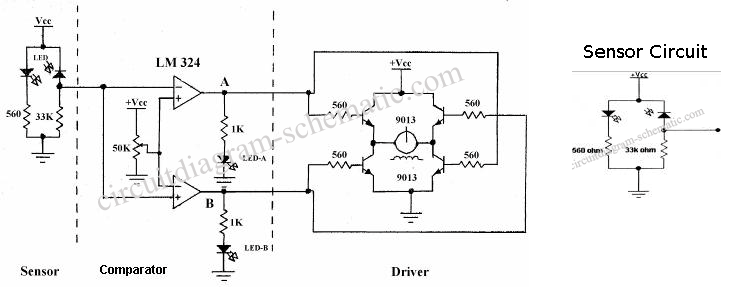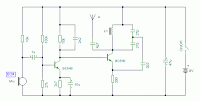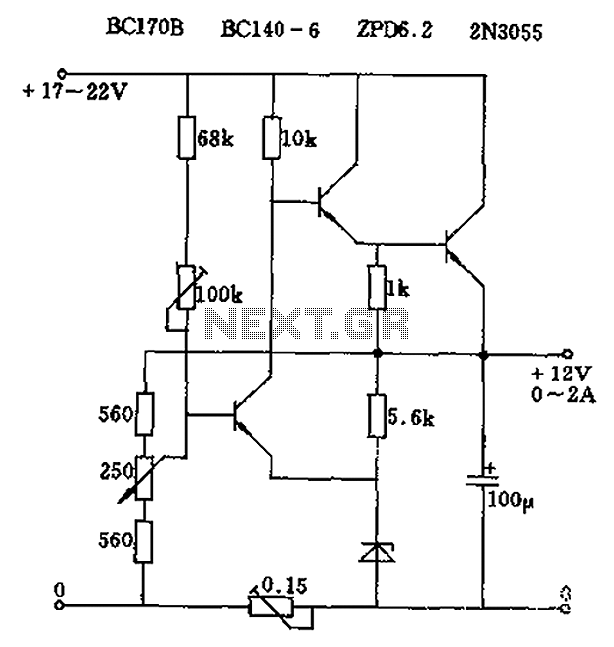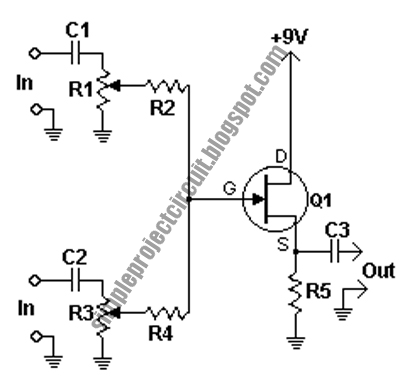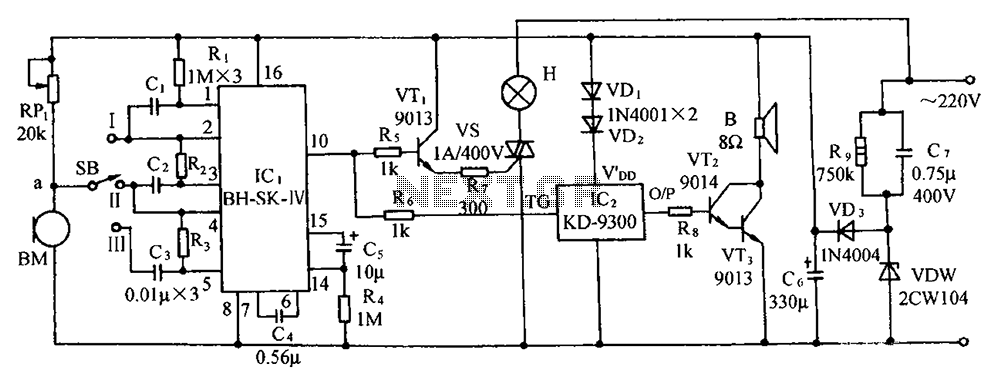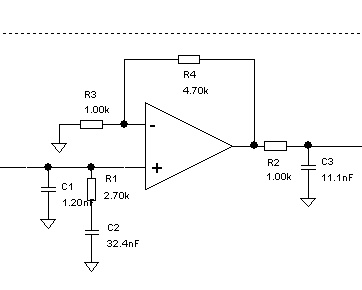
buzzer circuit
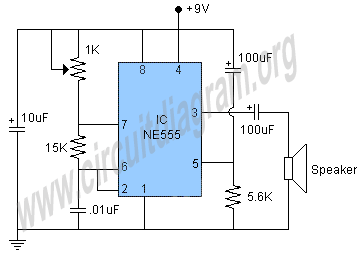
This project involves a 555 buzzer circuit utilizing the NE555 timer IC, which comes in an 8-pin DIP package and performs a wide variety of functions in electronic circuits. The circuit described will produce a buzzer sound when a 9-volt power supply is applied. The frequency of the sound can be adjusted using a 1K variable resistor and by changing the value of a 15K resistor. All electrolytic capacitors should have a voltage rating of 10 volts, and a speaker with an impedance of 8 to 25 ohms should be used. Other circuits, such as the 555 tone generator and siren circuit, can also be employed for buzzer applications.
The NE555 timer IC is configured in an astable mode, allowing it to function as an oscillator that generates a square wave output. In this configuration, the frequency of the oscillation is determined by the resistors and capacitors connected to the timer. The 1K variable resistor serves as a means to fine-tune the frequency, while the 15K resistor sets a baseline resistance that contributes to the timing cycle.
To implement this circuit, the following connections are essential: pin 1 (ground) is connected to the negative terminal of the power supply, while pin 8 (VCC) is connected to the positive terminal of the 9-volt supply. Pins 2 (trigger) and 6 (threshold) are interconnected, and pin 2 is also connected to the junction of the 1K variable resistor and the 15K resistor, which are arranged in series with the capacitor connected to pin 6. The capacitor, typically a non-polarized type, is connected between pin 6 and ground, influencing the timing characteristics of the output.
Pin 3 (output) is connected to the positive terminal of the speaker, while the negative terminal of the speaker is grounded. The output from the NE555 will drive the speaker, producing the desired buzzer sound. To ensure reliable operation, it is advisable to use electrolytic capacitors rated for at least 10 volts to prevent damage from voltage spikes. The choice of speaker impedance between 8 to 25 ohms will affect the loudness and quality of the sound produced.
This circuit can be further enhanced by integrating additional components, such as diodes for protection against back EMF generated by the speaker, or additional resistors and capacitors to modify the sound characteristics. Other configurations, such as the 555 tone generator and siren circuit, can also be explored for varied audio output applications.This is a project of a 555 buzzer circuit. NE555 is a timer IC comes in 8 pin dip package, it performs wide variety of tasks in electronic circuits. The circuit mentioned below will produce a buzzer sound when 9 volt power will be applied. The frequency of sound can be changed with the help of 1K variable resistor and changing the value of 15K res
istor. All electrolytic capacitors will be of 10 volt ratings, use 8 to 25 ohms speaker. There are also other circuits which you can use for buzzer purpose like 555 tone generator and siren circuit. 🔗 External reference
The NE555 timer IC is configured in an astable mode, allowing it to function as an oscillator that generates a square wave output. In this configuration, the frequency of the oscillation is determined by the resistors and capacitors connected to the timer. The 1K variable resistor serves as a means to fine-tune the frequency, while the 15K resistor sets a baseline resistance that contributes to the timing cycle.
To implement this circuit, the following connections are essential: pin 1 (ground) is connected to the negative terminal of the power supply, while pin 8 (VCC) is connected to the positive terminal of the 9-volt supply. Pins 2 (trigger) and 6 (threshold) are interconnected, and pin 2 is also connected to the junction of the 1K variable resistor and the 15K resistor, which are arranged in series with the capacitor connected to pin 6. The capacitor, typically a non-polarized type, is connected between pin 6 and ground, influencing the timing characteristics of the output.
Pin 3 (output) is connected to the positive terminal of the speaker, while the negative terminal of the speaker is grounded. The output from the NE555 will drive the speaker, producing the desired buzzer sound. To ensure reliable operation, it is advisable to use electrolytic capacitors rated for at least 10 volts to prevent damage from voltage spikes. The choice of speaker impedance between 8 to 25 ohms will affect the loudness and quality of the sound produced.
This circuit can be further enhanced by integrating additional components, such as diodes for protection against back EMF generated by the speaker, or additional resistors and capacitors to modify the sound characteristics. Other configurations, such as the 555 tone generator and siren circuit, can also be explored for varied audio output applications.This is a project of a 555 buzzer circuit. NE555 is a timer IC comes in 8 pin dip package, it performs wide variety of tasks in electronic circuits. The circuit mentioned below will produce a buzzer sound when 9 volt power will be applied. The frequency of sound can be changed with the help of 1K variable resistor and changing the value of 15K res
istor. All electrolytic capacitors will be of 10 volt ratings, use 8 to 25 ohms speaker. There are also other circuits which you can use for buzzer purpose like 555 tone generator and siren circuit. 🔗 External reference
